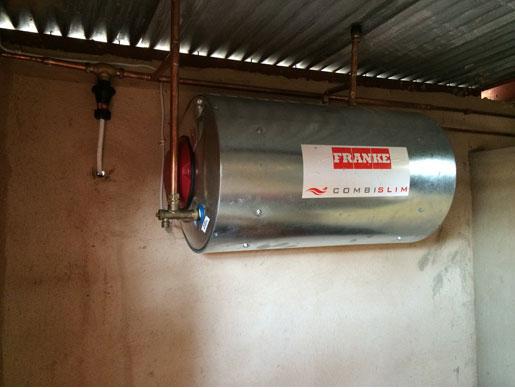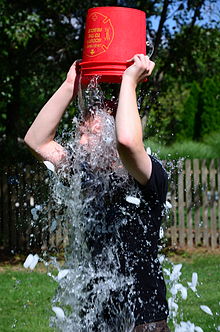I hope that does not sound like whinging. It is really just the experience I had and I would not trade it for anything.
You have to know that this particular course was to be presented in English not Afrikaans. All of my classmates, save one, were fluent in English. The young man who was not proficient in speaking the English language must have been able to comprehend, otherwise he would have been done for at the outset.
This language/cultural issue was going to be important throughout this course. As your instructor is quadrilingual and slips in and out of the languages at will.
David would slide into Afrikaans when some did not understand the concept in English. It was interesting to be able to grasp the occasional word and get the gist of what was being said. (even some of the jokes/humour)
A perfect demonstration of slipping in and out of the language with the animals names during the tracking session. Afrikaans: Rooikat, Vlakvark, Ratel, Volustrus, etc etc etc. Never mind pronunciation.
My fellow students got many good laughs at my attempts at speaking Afrikaans. Literally, they almost fell on the ground laughing. Apparently there are a few curse words that are very close to "good morning" in Afrikaans. Oops.
Onward and upward. This is a portion of the synopsis of the course:
"Duration - The course is ten days long.
Format of course - As far as possible the mornings are used for theory and the afternoons for practical training. Day ten is reserved for writing the theory exams and Practical assessments.
Preparation - Special attention should be paid to the Safari Club International (SCI) and Rowland Ward (RW) minimum trophy sizes, The Limpopo Environmental Act (Summary of appropriate sections) will also be forwarded to you for study prior to the course."
I did not get any materials prior to my arrival. Which it turned out was going to make this very interesting for me.
SCI makes life fun by creating THREE scores for each animal you can hunt; Gold, Silver & Bronze. If I would have been thinking I would have determined the percentages for each level and just done the math from one set of scores. Hind sight is always 20/20. I had obviously studied the minimums for the species on my list and had those memorized at this point. Those numbers however, were just mystical notions without having the ability to judge the trophies properly.
Rowland Ward, thankfully just has one score for each animal, but you still have to memorize the entire list. After learning that a Rowland Ward record book animal was always going to make SCI Gold, it made it much easier to converse with Outfitters/PH's about my expectations. "I am looking for Rowland trophies."
I have never entered an animal in a record book, but I use the knowledge base inherent in these minimums to tell me how to be selective in my Conservation Hunting.
However, I did manage to obtain some books on the relevant subject matter prior to my arrival and did some light reading.
Field Guide to Mammals of Southern Africa - Chris and Tilde Stuart.
A photographic guide to Tracks and Tracking in S.Africa - Liebenberg
Newman's Birds of South Africa - Sappi
Roberts' Birds of Southern Africa (Maclean)
Insectlopedia - Holm
How to identify trees in SA - van Wyk
ROWLAND WARD’S SPORTMANS HANDBOOK .Rowland Ward
THE BEHAVIOR GUIDE TO AFRICAN MAMMALS by Richard Estes.
Hunting Africa a Practical Guide by Swan, Botes & Smit
Mammals of South Africa (Burger CilIiers).
Roberts Birds of Southern Africa (Maclean).
Field Guide to Snakes and other Reptiles (Bill Branch).
A Field Guide to the Trees of Southern Africa. (P van Wyk)
A Field Guide to the Animal Tracks of South Africa (L Liebenberg).
The Ultimate Field Guide for Survival in the African Bushveld by-- By Mitch Mitchell
Don't Die in the Bundu -- by D.H. Grainger
Behaviour Guide Series attached as a pdf should give you some idea of just how much you could make your head hurt if your were into studying. It is a 47 page Bibliography for some other courses I found. An excellent resource.
These Universities have various scholarly offerings on wildlife and the research thereof.
University of CapeTown
Stellenbosch University
Rhodes University
The first day started with my shower and then reading at 06:00 until Rusks and Coffee were taken in the dining area and then into the classroom at 07:30
"THE LAWS"
Nature Conservation law relevant to hunting is first up.
In writing this I have now realized why the instructor was a little perturbed with the class when were a little slow at grasping the law. We were supposed to have studied this stuff before arrival.
I am having to translate cultural differences at the same time as trying to comprehend the law. It was frustrating and rewarding at the same time.
Practical scenarios were presented to us for us to determine if what was going on was actually legal. The obvious "tricks" in the scenarios so you were not actually just learning to regurgitate law by memory. You had to apply knowledge to situations. When David got bored he made each student create two scenarios and present them to the class with answers. A great way to learn.
Lunch/Brunch then into trophy judging theory.
This is not home. I can assess the trophies in Canada with little effort and a cursory glance.
There are so many more animals here and plenty of the females have horns that can be as large as males. No antlers here.
How do you distinguish between a Male and female Oryx at 400 yards? How's about Blesbok? etc etc etc.
From 100 yards with Binoculars and you have 30 seconds, including the side view and the front. The goal is to be +/- 1 inch. No body, no ears, no face and with bush in the back ground.
You were provided one reference: Davids shoulder point to shoulder point is 20 inches.
More laws and more reading, more memorizing scores.
Dinner as a group and socializing after dinner and then more reading, more memorization until 22:00.
It was a FULL day.






